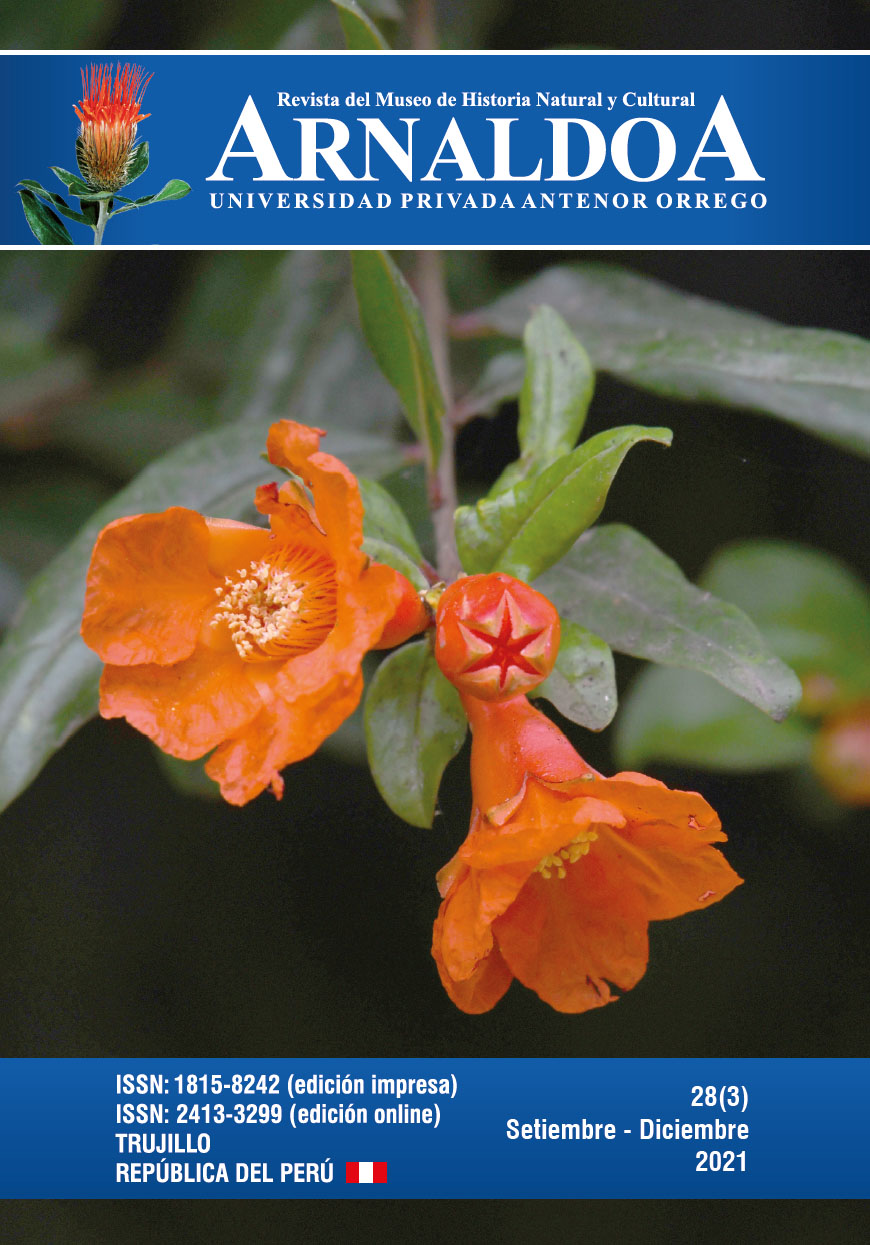Flora and fauna of the Huarimayoforest (Canta, Lima-Peru): A littleremnant area with high biodiversity
DOI:
https://doi.org/10.22497/arnaldoa.311.31103Palavras-chave:
Andes, animals, hotspots, montane forest, plantsResumo
The relict forest of Huarimayo is located on the western slope of the central Andes of Peru, between
2700–3200 m. Together with Zárate and Linday, they are the only dry cloud forests reported for
the department of Lima. These discontinuously distributed forests are considered among the
most threatened ecosystems due to the burning of the soils for adaptation to agricultural land
and livestock activities. The objective of this study is to provide a biodiversity assessment for the
Huarimayo relict forest and to use the data to analyze geographical relationships of restricted
species to the dry cloud forest. Evaluations were carried out between 2015 and 2019. The fauna
is represented by 54 species, including 49 species of birds, three mammals and two reptiles, while
the flora is composed of 238 species of vascular plants, including seven infraspecific taxa (four
subspecies and three varieties) and 31 species of non-vascular plants (including one subspecies and
one variety). Two liverworts, Cryptomitrium tenerum and Fossombronia lamellata, are newly reported
to Peru. Endemism is composed of 55 (23%) species consisting of 46 plants, six birds, two mammals
and one reptile. We concluded that the diversity of the Huarimayo relict forest is representative of
the western slope, whose most important floristic contributions come from the northwestern zone,
which also functions as a strategic site for altitudinal migratory birds.
Downloads
Downloads
Publicado
Edição
Seção
Licença
Copyright (c) 2025 Paúl Gonzáles, Elena Castañeda, Elluz Huamán, Warner Aparco, Bryan Espinoza Prieto, José Salvador, Yangjosé Juárez, Juan C. Cusi, Diego Olivera, Yessica Vilca, Jasmin Opisso, Asunción Cano, Niels Valencia

Este trabalho está licenciado sob uma licença Creative Commons Attribution 4.0 International License.
Al enviar un artículo a la revista, queda sobrentendido que los autores están de acuerdo con transferir los derechos de publicación a la revista una vez que sea aceptado.
Arnaldoa es publicado por el Museo de Historia Natural y Cultural, en representación de la Universidad Privada Antenor Orrego. Todos los artículos publicados en Arnaldoa son de acceso abierto y se distribuyen bajo los términos de Creative Commons Attribution-NonCommercial (CC BY NC 4.0), que permite el uso, distribución y reproducción sin restricciones en cualquier medio, siempre que el autor original y la fuente estén acreditados, y siempre que no alteren ni modifiquen el artículo. No hay ningún tipo de pago por parte de los autores para la publicación de acceso abierto de los artículos.
Green Open Access: los autores pueden compartir su investigación en una variedad de formas diferentes desde la web oficial de Arnaldoa (http://journal.upao.edu.pe/Arnaldoa). Los autores también pueden autoarchivar sus manuscritos inmediatamente y permitir el acceso público desde el repositorio de su institución o repositorios públicos (e.g. ResearchGate o Academia.edu) sin un período de embargo, una vez que reciben la versión final de la versión en línea (no la impresa) de sus artículos. Los autores solo pueden compartir la versión final de la versión en línea (no la versión impresa) de sus artículos.







